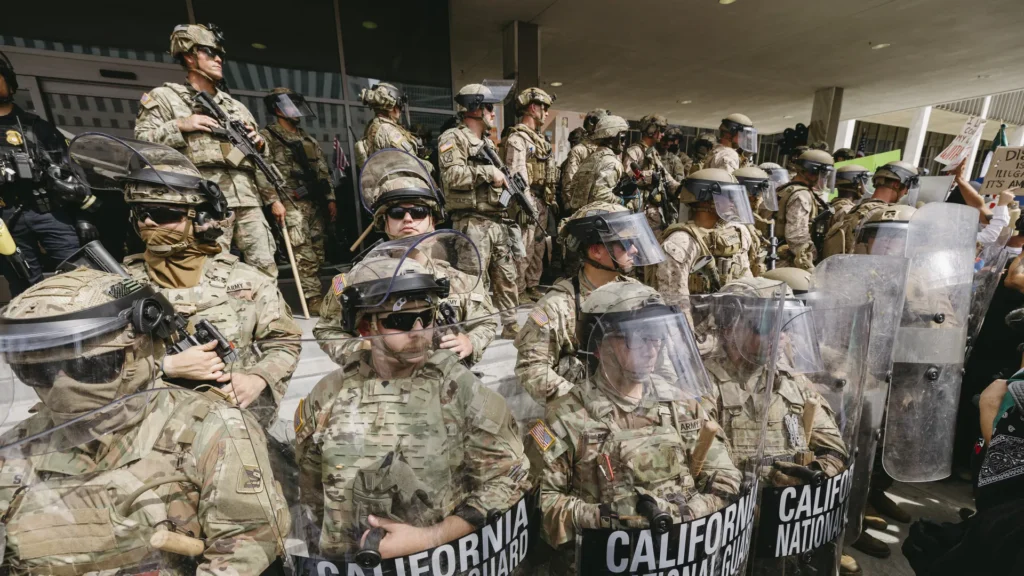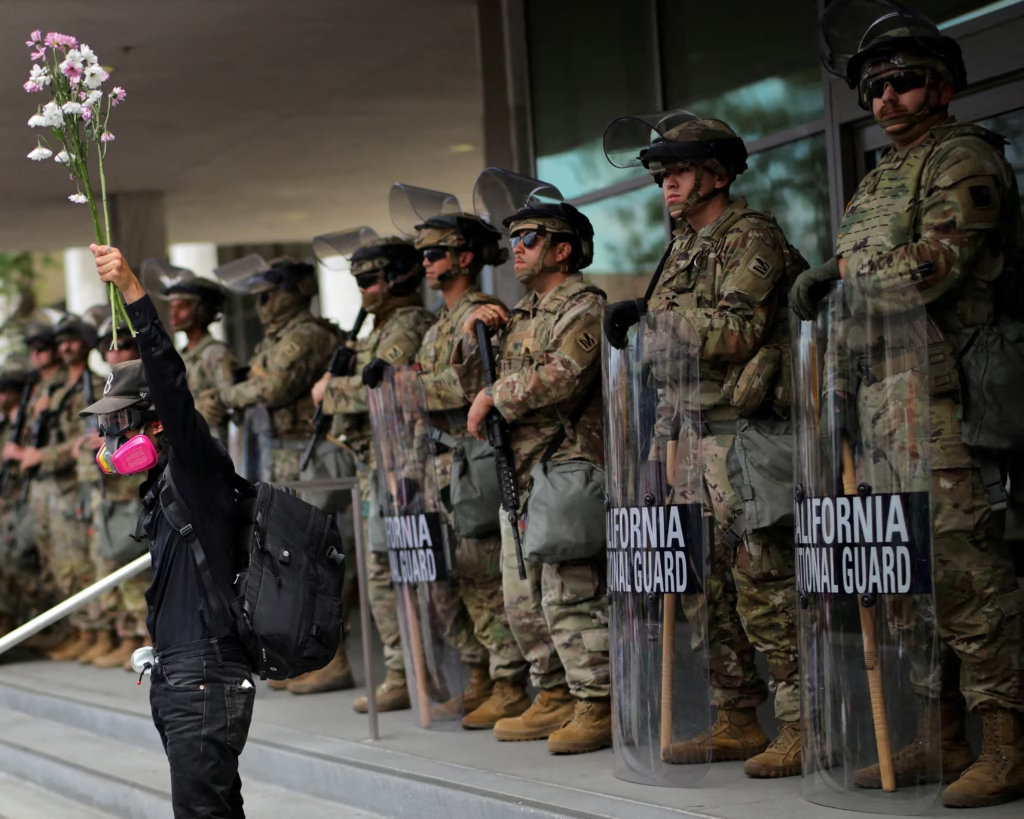In a significant move during a tense period of national unrest, President Donald Trump has ordered the withdrawal of 2,000 National Guard troops from California. The decision comes in response to ongoing protests that have erupted across the state and the country, following a series of incidents involving police brutality and racial injustice.
While some see the withdrawal as a sign of calming tensions, others believe it could leave cities vulnerable. The order has sparked mixed reactions among state leaders, protest organizers, law enforcement, and the general public.
Background: Why the National Guard Was Deployed
The recent protests in California began in response to nationwide outrage over incidents involving police violence, particularly the killing of George Floyd in Minneapolis. These events triggered large-scale demonstrations in cities like Los Angeles, San Francisco, Sacramento, and Oakland.
Due to rising tensions, reports of looting, and some instances of violence, state officials requested National Guard assistance to support local law enforcement. Nearly 2,000 troops were stationed in California to help manage the situation.
The presence of uniformed soldiers in city streets brought a mix of feelings. For some citizens, it was a comforting sight, a symbol of order during uncertain times. For others, especially peaceful protesters, it felt intimidating and unnecessary.
Trump’s Announcement and Justification

President Trump announced the withdrawal of the troops via a tweet and later elaborated during a press briefing. He stated that the decision was made based on improved conditions and reduced threat levels in California’s major cities.
“Our brave men and women of the National Guard have done an incredible job. Order is being restored. California is now safe,” Trump said.
He praised the Guard’s role in controlling looting and maintaining peace, adding that their presence was no longer required. “We are now scaling down our presence and moving towards healing,” the President stated.
This marks a notable shift from Trump’s earlier stance, which strongly emphasized “law and order” and included threats to use military force if governors failed to control violent protests.
Mixed Responses from California Leaders
Governor Gavin Newsom’s Reaction
California Governor Gavin Newsom had a cautious but cooperative response to the withdrawal. While he acknowledged the reduction in violent activities, he emphasized that the state would continue monitoring the situation closely.
“We’re in a better place than we were a week ago, but this doesn’t mean the job is done,” Newsom said. “We still have peaceful protests going on, and we need to make sure they stay peaceful.”
Newsom also highlighted that the state’s own emergency services and police departments would now take over full responsibility for managing public gatherings.
Mayors and Local Officials Speak Out
Mayors from cities like Los Angeles, San Francisco, and Oakland have expressed a range of views:
- Los Angeles Mayor Eric Garcetti said the withdrawal was a positive step toward restoring trust and calm in the community.
- San Francisco Mayor London Breed emphasized the need to maintain a strong but respectful police presence without military involvement.
- Oakland’s leadership warned that the decision could be premature and that any resurgence in violence could put citizens at risk.
Protesters’ and Public Opinion
Reactions from protest groups and the public are just as varied. Many protesters see the withdrawal of the National Guard as a victory, interpreting it as a recognition of the peaceful nature of most demonstrations.
“We are not criminals. We are citizens demanding justice. The National Guard never needed to be here,” said Maya Torres, a protest leader in Los Angeles.
However, some residents and business owners, especially in areas affected by looting, worry about the reduced security presence. “I support the protests, but I also want to feel safe in my neighborhood,” said Raj Patel, a shop owner in Sacramento.
Law Enforcement Concerns and Adjustments

Local police departments now bear the full responsibility for maintaining peace during the ongoing protests. Many departments are increasing patrols and community outreach programs to build trust and prevent escalations.
Law enforcement agencies have stated they will continue working with protest organizers to ensure safety. Some departments are also undergoing internal reviews of their handling of the protests and use of force policies.
In Los Angeles, the LAPD announced new training programs focused on de-escalation and cultural awareness, hoping to reduce the need for aggressive crowd control.
Political Reactions at the National Level
The move has also stirred discussions in Washington. While Republicans praised Trump’s decision as a sign of regained control and strength, many Democrats criticized the initial deployment of troops, calling it an overreaction that inflamed tensions rather than calmed them.
Senator Kamala Harris (D-CA) commented:
“The people of California have the right to protest. We never needed an army to deal with our citizens. We needed dialogue and accountability.”
Some military officials, both active and retired, also questioned the decision to deploy troops in domestic situations. Former Defense Secretary Jim Mattis previously criticized Trump for politicizing the military.
Impact on the Broader Movement
While the withdrawal marks a turning point, the protests are far from over. Demonstrators continue to call for:
- Police reform and defunding
- Justice for victims of police violence
- Greater accountability from public officials
- Systemic changes in racial and economic inequality
The removal of the National Guard may signal a de-escalation, but activists warn that it must not be mistaken for resolution.
Media and Public Narrative
News outlets and analysts are divided in their interpretation of Trump’s decision:
- Some frame it as a strategic pullback meant to lower tensions and show responsiveness.
- Others argue it was a reaction to public backlash and political pressure ahead of the upcoming elections.
Social media platforms have exploded with opinions, hashtags like #GuardOut and #PeacefulProtests trending for days.
Looking Ahead: What Comes Next for California?
With the National Guard gone, California enters a new phase of protest management and civic discussion. Leaders at all levels are being called upon to:
- Listen to the demands of protestors
- Enact meaningful reforms
- Protect citizens’ rights while ensuring public safety
There is cautious optimism, but also lingering uncertainty. Trust between citizens and the government remains fragile, and the coming weeks will be crucial in determining whether that trust can be rebuilt.
Conclusion
The decision by President Trump to withdraw 2,000 National Guard troops from California is a momentous one, signaling a possible shift in the nation’s handling of civil unrest. While it brings relief to many, it also opens up important conversations about how protests are managed, how citizens are protected, and how governments respond to public dissent.
Whether this move brings lasting peace or temporary calm will depend on the actions that follow—not just from politicians and police, but from all parts of society.
Read Next – Omar Fateh Minneapolis Mayoral Candidate Slams Racist Attacks






